The story of the continent’s earliest human arrivals is being revealed at a rock shelter in remote and challenging territory

If you see a yamuti, then hide in a tree,” Adnyamathanha children are told, “for the Yamuti can’t lift its head to the sky.” For some Australians, learning about the Yamuti—a terrifying mythical creature that eats people and carries children away—is a rite of passage. The Adnyamathanha, one of Australia’s many aboriginal communities, have inhabited the Flinders Ranges in northern South Australia and passed down stories of the Yamuti for as long as they can remember. Some believe the myth has its origin in a long-extinct, hippo-sized mammal called the diprotodon—the largest marsupial known to have lived. Archaeological excavation inside a recently discovered rock shelter suggests that Australia’s earliest human occupants did, in fact, interact with these giant beasts more than 40,000 years ago. But the finds in the shelter, known as Warratyi, reveal much more. They show that people traveled into the continent’s arid interior far earlier than previously thought, and were culturally and technologically more sophisticated than once believed. Warratyi, researchers say, is rewriting the history of the first Australians.
Denne historien er fra July/August 2017-utgaven av Archaeology.
Start din 7-dagers gratis prøveperiode på Magzter GOLD for å få tilgang til tusenvis av utvalgte premiumhistorier og 9000+ magasiner og aviser.
Allerede abonnent ? Logg på
Denne historien er fra July/August 2017-utgaven av Archaeology.
Start din 7-dagers gratis prøveperiode på Magzter GOLD for å få tilgang til tusenvis av utvalgte premiumhistorier og 9000+ magasiner og aviser.
Allerede abonnent? Logg på
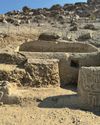
ORIGINS OF PERUVIAN RELIGION
While investigating looters' holes at the site of La Otra Banda in northern Peru's Zaña Valley, archaeologist Luis A. Muro Ynoñán of the Field Museum and the Pontifical Catholic University of Peru spotted carved blocks around seven feet below the surface.
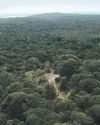
ISLAND OF FREEDOM
Many of the enslaved Africans sent to Brazil beginning in 1549 were from what is now Angola, where one of the most widely spoken languages was Kimbundu.
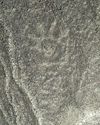
NAZCA GHOST GLYPHS
From the 1940s to the early 2000s, geoglyphs were discovered in the Nazca Desert of southern Peru depicting animals, humans, and other figures at the rate of 1.5 per year.

COLONIAL COMPANIONS
The ancestry of dogs in seventeenth-century Jamestown offers a window into social dynamics between Indigenous people and early colonists.
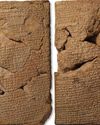
BAD MOON RISING
The British Museum houses around 130,000 clay tablets from ancient Mesopotamia written in cuneiform script between 3200 B.C. and the first century A.D.
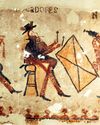
DANCING DAYS OF THE MAYA
In the mountains of Guatemala, murals depict elaborate performances combining Catholic and Indigenous traditions
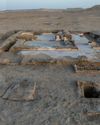
LOST GREEK TRAGEDIES REVIVED
How a scholar discovered passages from a great Athenian playwright on a discarded papyrus

Medieval England's Coveted Cargo
Archaeologists dive on a ship laden with marble bound for the kingdom's grandest cathedrals
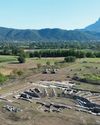
Unearthing a Forgotten Roman Town
A stretch of Italian farmland concealed one of the small cities that powered the empire
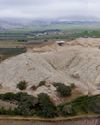
TOP 10 DISCOVERIES OF 2024
ARCHAEOLOGY magazine reveals the year's most exciting finds